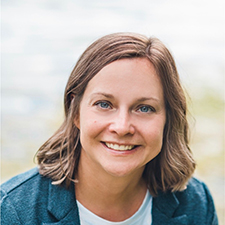The Benefits Of A Functional Service Provider (FSP) Model In Uncertain Times

By Ed Miseta, Chief Editor, Clinical Leader

The following content contains the thoughts and opinions of Carrie Lewis and do not represent the thoughts and opinions of Endo Pharmaceuticals Inc. or its affiliates.
Contract research outsourcing can be a challenging endeavor even in the best of times. Simply selecting the right model can be a difficult chore, and then there is the task of selecting the right partners, preparing contracts, and conducting oversight. When operating in uncertain times, the process becomes significantly more difficult.
Carrie Lewis has seen and experienced the challenges from both sides of the fence in her 16 years in drug development. She spent almost five years with Teva Pharmaceuticals as a clinical project manager, was director of project delivery at a large CRO for more than two years, and now serves as senior director of strategy, oversight, and training for Endo Pharmaceuticals Inc. (“Endo”). She recently presented at the 2021 SCOPE conference on the topic of using the FSP model in uncertain times.
“There are benefits to using an FSP model, and I find those benefits to be enhanced during times of uncertainty,” says Lewis. “I believe there are four primary benefits to using this model. They are financial simplicity, resourcing simplicity, a reduction in operational burden, and flexibility.”
Zero Change Orders
Lewis believes the FSP partnerships her company had in place allowed it to manage the COVID-19 pandemic with very little disruption. The company certainly had to adapt to changes brought on by COVID, but where permitted by state and local regulation, studies remained open, and timelines were met. Notably, budgeted expenses did not increase. That is where the financial simplicity advantage comes into the picture.
“With an FSP model there is easy set costing in place,” she says. “There is a low risk for change orders since costing is agreed upon up front and is based on time and not exact tasks or units. We are paying for someone’s time, which means even if our tasks must shift and we suddenly need to prioritize, the costs will not change. Additionally, accruals and forecasting are streamlined and there are minimal changes from month to month.”
Despite the chaos caused by the pandemic in 2020, Endo faced zero change orders with their FSP provider. With the FSP model Endo had in place, change orders were never part of any discussions she had with FSP partners.
Find The Best Fit

“I always hear people speaking to their CROs and saying they want the A team, not the B team or the C team,” notes Lewis. “I think what is more important is finding the right team, one that best fits your personality and your own internal culture. My A team may not be someone else’s A team. By partnering with your FSP provider and making them aware of your needs, you can get the team that is right for you.”
There are also cost savings that can be realized through resource forecasting, allocation, and redeployment. Lewis states this reduces time and effort in the recruiting process for sponsors, as the FSP partners takes on that time.
“The FSP vendor leverages capabilities with a pool of existing talent or pulls staff into open roles after coming off another assignment,” says Lewis. “This creates a smaller and smarter team which can be customized for the sponsor’s needs. The team is 100% dedicated to your project and FSP teams also tend to have reduced turnover. I think this is very important. In other models the project manager you’re working with may also be working with two or three other sponsors. That means they can be pulled in different directions and even the best project managers can struggle in that situation.”
An FSP model enhances flexibility and scalability which can efficiently increase or decrease resource demand, and the FSP model also eliminates term limits of contractors which enables the retention of high performers with knowledge of your project as these contracted workers are employees of its FSP partner.
Uncertainty Enhances Benefits
Lewis believes the benefits of an FSP model are enhanced during times of uncertainty. This is primarily due to the model reducing the operational burden from sponsors by assuming responsibility of several aspects of the study. Those aspects are related to training and onboarding, performance management and staff oversight, and even administrative tasks such as time and expense report approvals and travel arrangements and approvals.
“FSP partners can even help with standards across multiple functions and team continuity to identify efficiencies and implement process improvement initiatives,” adds Lewis. “That collaboration allows the partners to synergize experiences and achieve shared goals. Flexibility is another key benefit. COVID forced all companies to be more flexible. Obviously the FSP model makes it easy to ramp up or down resources as needed. The dedicated model means you are not competing against other sponsors for time.”
Lewis also believes FSP partnerships can lead to enhanced partnerships with sites. When set up correctly, FSP employees become an extension of the sponsor company. This allows for improved partnering and a true collaboration between the sponsor, the site, and the FSP team.
Last year Endo conducted a survey of its sites. Most of the sites had positive things to say about their relationship with Endo, even though many of the site contacts were with FSP contractors.
FSP Best Practices
Lewis has a few best practices in place for successful FSP management. She believes these practices will help sponsor companies conducting trials but are especially helpful during times of uncertainty. First and foremost, she believes in trust. While not always easy to achieve, the main benefit of trust is a true partnership between sites and sponsors with open and honest conversations, especially during difficult times. It leads to a greater comfort level between teams, shared goals, and a greater willingness to give and take to meet those goals. She believes building trust between business partners is no different than building them in your personal relationships. She notes it takes focus, hard work, and dedication to build any type of relationship.
Next on her list is collaboration. Once trust is built, both teams must have a willingness to collaborate with each other. Part of that ability to collaborate is the setting of clear expectations. Expectations must be revisited as needed and must include proper goals and metrics. A lack of clear expectations will generally result in frustration. When goals are missed, that is not a time to point fingers. It is an opportunity to look at what could have been done better.
Lewis also stresses open, honest, and timely communication as well as oversight meetings to keep everyone on track. Joint planning and management of expectations is crucial at both the FSP vendor and sponsor leadership levels, as is a clear scope of work and task ownership alignment to ensure folks are aware of their responsibilities. Finally, Lewis believes in buy-in and commitment to the governance charter from senior management. Those charters should include clear KPIs that are established and put in place, but which are flexible and can adjust accordingly as the partnership grows.

